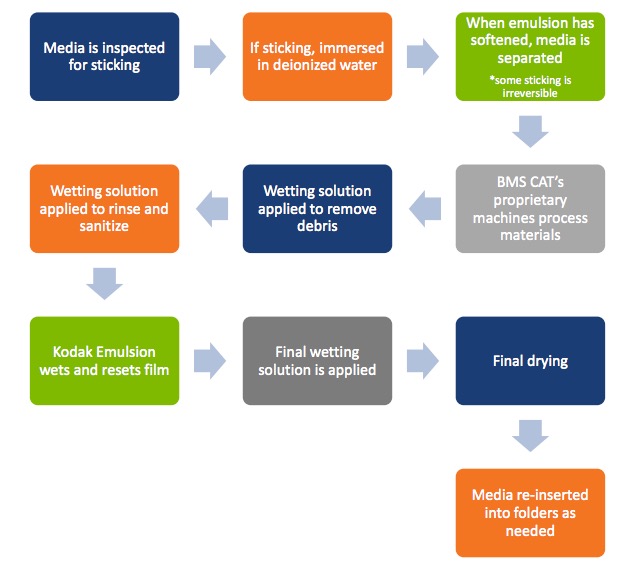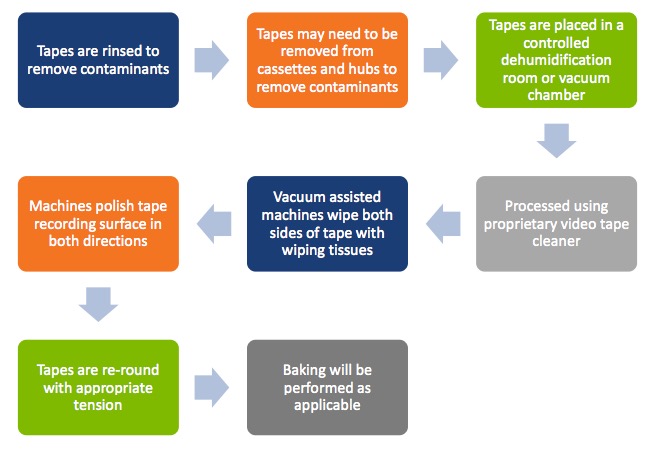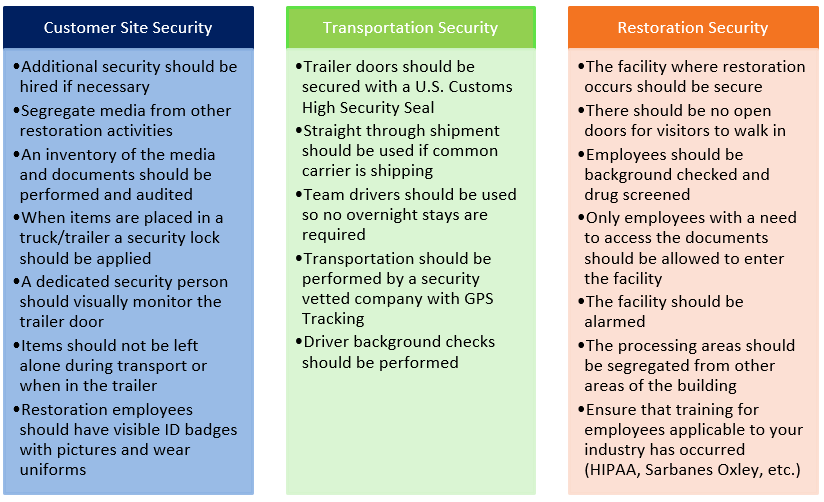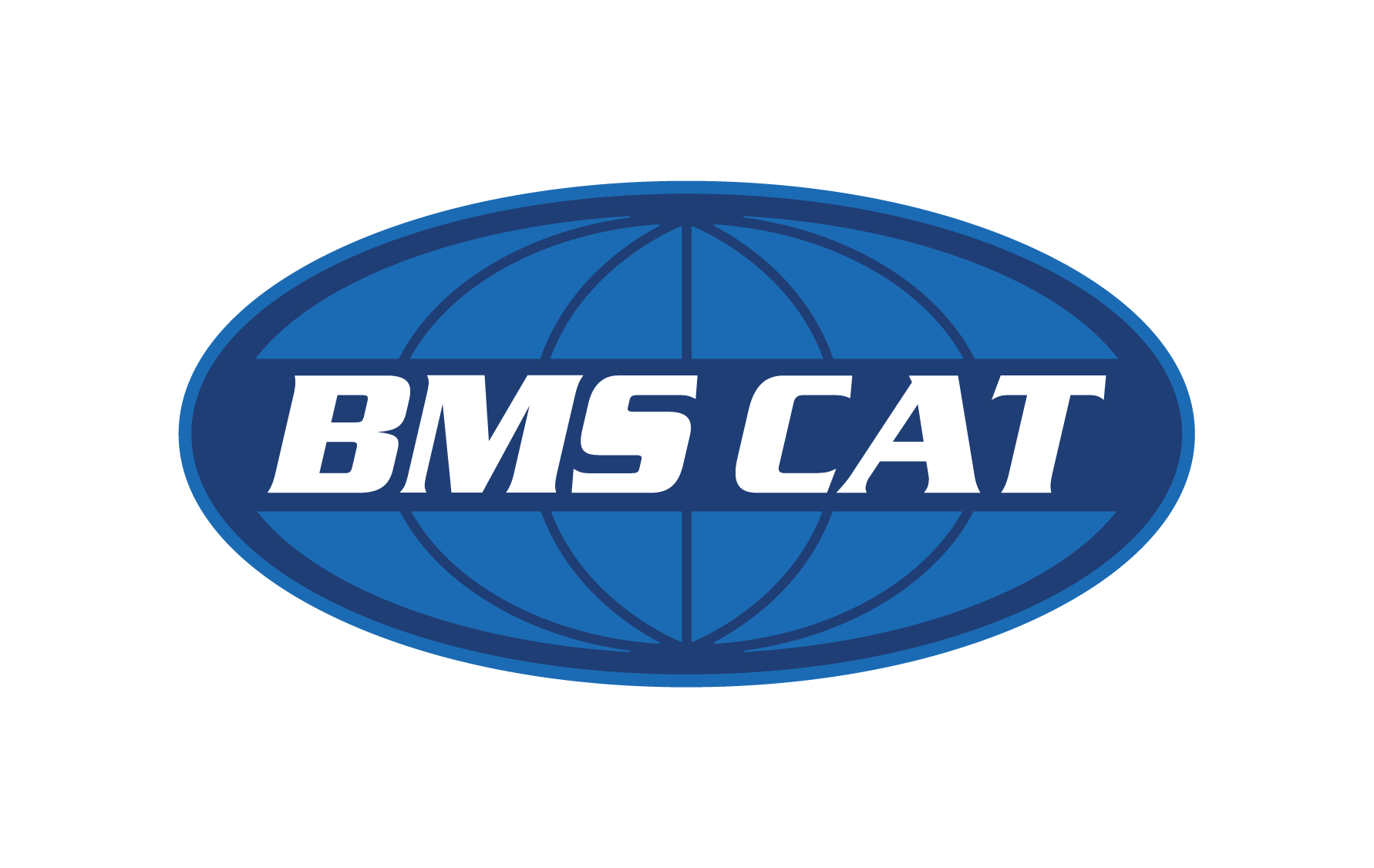Summary
When media such as x-rays, film, microfilm and microfiche are damaged, important data can be threatened. Organizations must follow applicable laws and regulations when retaining important data on any type of media. Additionally, some media may have historical value to the organization. Can special media be saved if it becomes wet or contaminated with mold or debris?
Why Does It Matter?
The length of time an organization must retain records depends on the type of record and the applicable state and federal laws. It is important to understand the retention requirements up front. Documents with healthcare information, for instance, would fall under HIPAA and federal requirements for retention trump the state. Special media also often holds information with historical value. From valuable research to documentation on an event, there are many reasons an organization would retain special media even if the law does not require it.
What Can Be Done?
Depending on the type of media, different techniques will be utilized for recovery. Unlike paper, media should never be frozen.
X-Rays: Often used as a medical image, x-rays are vital to our health care system. When x-rays get wet, the emulsion side of the media will reactivate. This is the side where the image is held. When wet, the emulsion acts as an adhesive and will begin to adhere to almost any surface. If handled improperly, irreversible damage to the image will occur.
Movie Film & Microfilm (Microforms): Microforms come in a number of formats. The most familiar of these are 16mm or 35mm roll microform and microfiche, the latter resembling a plastic file card. Roll microform, in either 16mm or 35mm formats, can be cut into short strips and housed in clear “jackets” to produce a microfiche. The emulsion side of this film is matte, while the non-emulsion side is glossy.
Current movie film is made out of a polyester base substrate. This is the carrier that the film emulsions will be layered on. Film prior to 1950 could be made out of cellulose nitrate. Cellulose nitrate material is very unstable and very flammable. Cellulose acetate film was introduced in 1950 is non-flammable. Both stable and durable, polyester film has a long life expectancy.
Most films will have bases of cellulose acetate or polyester that will naturally degrade over time, even newer versions of Cellulose film. If the film is not properly stored, the degradation process is accelerated. Acidic oils and fingerprints can damage the film, so it is important to be cautious when handling. Once wet, these items should not be allowed to dry to avoid sticking together at the enclosures.
BMS CAT’s standard procedures for processing x-rays and film are as follows:

During all of the above stages, the media passes through a series of rollers and squeegees to ensure that all surfaces areas are uniformly processed.
Tape: Magnetic tape has been used for recording, distributing and preserving information. Its ease of use and versatility has made it a popular choice for record keeping. With careful handling, the tape can be recovered. Tapes should not be allowed to dry. Drying will occur unevenly and deformation can occur. Tapes should remain wet and refrigerated until shipping occurs.
BMS CAT’s standard procedures for processing tape are as follows:

It is important to note that during both processes, media is carefully inventoried at each step. Upon completion, items are repackaged and returned to the customer in batches. In the past, air drying has been the primary method of restoration for these types of media. With new technology and stricter safety protocol, this process is no longer recommended.
Considerations
Media stored under humid conditions can become a host for mold, mildew, and fungus. Generally, the organisms start the attack from the outside edge and make their way into the inside. These biological agents can cause significant damage to the emulsion. The growth initially appears in the form of matte-white spots and eventually grows into a lacy, web-like pattern. Once the organisms have eaten into the emulsion, however, the image loss is irreversible. Our Kodak film processing equipment, in conjunction with an EPA-registered biocide, can stop the degradation. It is recommended then to store the media in a cold and dry environment.
If your items are important enough to recover, security must be a concern. Security occurs at several points as demonstrated below:

What Can You Do?
If there is any advance notice of potential damage, all possible protective measures should be taken such as covering items with plastic, raising furniture and protecting electronics. Additionally, consider permanent storage of certain valuables.
It is important to have a plan in place for a disaster. It is highly recommended that you pre-contract with a restoration company before a loss occurs. This gets any administrative “red tape” out of the way, expedites response times and allows you to carefully pre-qualify the service for your exact needs. BMS CAT offers a Response Service Agreement at no cost.
